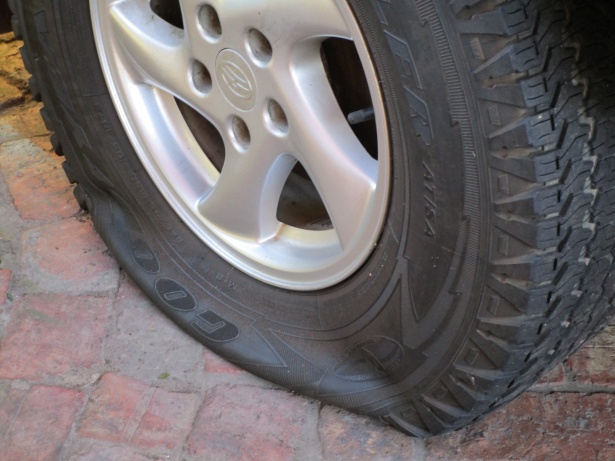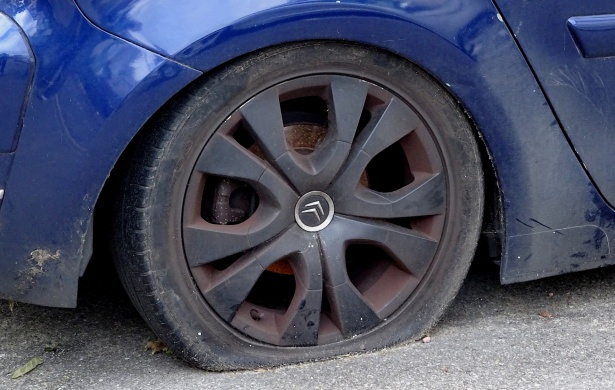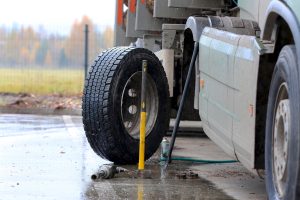Summary
– Risks of under-inflated tyres
– Performing regular checks
– Recommendations for inflating tyres
– Take advantage of technological developments
– Anti-puncture sprays
An under-inflated tyre leads to a risk of a blowout, higher fuel consumption, and uneven tyre wear. It is, therefore, a practice to be avoided. Here are a few tips to help you avoid it.
Risks of under-inflating a tyre

Under-inflation has important and dangerous consequences for your tyres and your safety:
– reduced contact surface;
– increased wear: a tyre under-inflated by 20% increases its wear by up to 30%;
– increased fuel consumption: up to 3%;
– Increased risk of a blowout.
Under-inflation is not the only mistake to avoid: there are other risks to driving with inadequate tyres.
Perform regular checks
City gas stations and highway service areas often offer ways to check and adjust your tyre pressure. Ideally, you should check your tyre pressure once a month.
To find out the ideal pressure, refer to the indications on:
– on the fuel filler flap;
– on the inside of the driver’s door;
– or in your car’s manual.
Tyre inflation recommendations
Note that the pressure to adopt is not the same depending on your load and the type of road you are driving on (highway or other). Thus, the inflation is indicated:
– when empty and when full;
– according to the front or rear tyres.
Moreover, driving on the highway requires more air in the tyres than on the road.
Please note: it is unnecessary to deflate your tyres when you change from highway to road driving.
To maintain your tyre pressure, make sure your tyres are cold, i.e., they have not been driven more than 2 or 3 kilometres. Do this regularly and especially when you go on vacation.
Take advantage of technological developments.
If you don’t like to check your tyre pressure regularly, technological innovations can make your life easier. Else, please remember to inform your car mechanic about it, so he will check the pressure and also check if your suspension is still doing well.
Pressure sensors
These systems evaluate the pressure and warn the driver in case of a puncture or under-inflation. They can be:
– An in-wheel speed sensor:
◦ this simple and inexpensive system detects a higher tyre speed than other tyres, caused by a higher tyre crush;
◦ on the other hand, this system lacks accuracy since it only detects significant pressure differences.
– of a rim pressure sensor, or TPMS (Tyre Pressure Monitoring System):
Self-inflating tyre
This innovation allows the tyre to automatically adjust its pressure according to the load through a mini-pump. The self-inflating tyre is not yet on the market and should initially be reserved for commercial vehicles.
In the meantime, you can already take advantage of a run-flat anti-puncture tyre.
Anti-puncture sprays
The puncture-proof spray allows repairing a punctured tyre without disassembling or using tools quickly. However, there are a few things to know:
– The use of a puncture-proof spray is only reserved for tubeless tyres.
– You can only use it if the puncture is a few mm and is located on the tread. Therefore, it is unnecessary to use it for a major puncture (tear) or one located on the sidewalls.
Good to know: The anti-puncture spray is essential for drivers of a car running on LPG because there is often no room for a spare wheel or a wheel cover.
How to use this spray
– Remove the valve cap from the punctured tyre, and if you can, remove the element that caused the puncture.
– Place the tip of the puncture can in the tyre valve.
◦ Empty the product inside the tyre.
◦ The can will release a product that will plug the hole and pump some air that will temporarily reinflate your tyre.
– Once the can is emptied, drive your car so that the product spreads throughout the tyre.
Tip: This is only a backup measure. After using a puncture-proof spray, it is strongly recommended to go to a garage. The recommended time is often indicated on the puncture-proof spray.
Hope the tips in this post will help you protect yourself from under-inflated tyres. Remember to leave your comments below.




